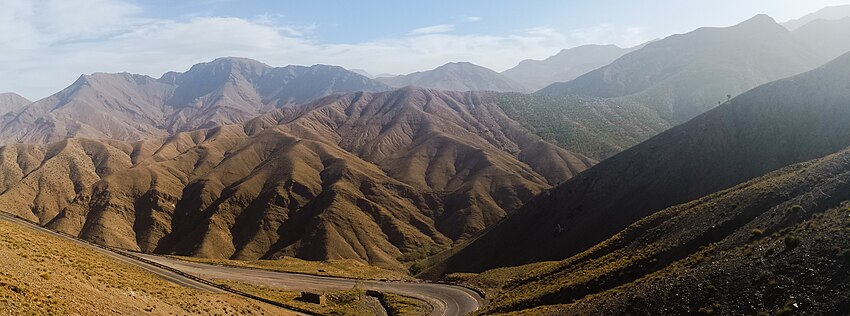The slim, rutted road to Imlil, the gateway town to Morocco’s High Atlas Mountains, typically rumbles with the pastime. On a regular day, sand-colored taxis bringing day-trippers up from Marrakech, fifty-six miles to the north, proportion the street with hulking tour buses and snub-nosed vehicles with Transport Touristique written in script across their hoods. Taxis filled with price range-minded backpackers trundle at the back of luxury SUVs from the

nearby Kasbah Tamadot, Richard Branson’s luxurious retreat, in which rooms cost more than $600 a night. German motorcyclists driving BMWs laden with gearboxes zoom beyond cyclists in bright helmets powering up the twisty mountain road in a heat climate.
Imlil, an important town in a valley with around 10,000 population, changed into as soon as a sleepy out-of-the-way location, little recognized even by Moroccans. Although, as extra hikers try to summit 13,671-foot Mount Toubkal, Northern Africa’s highest peak, Imlil has come to be something of a journey hot spot in the latest years. For residents, the ordinary hum of site visitors is reassuring. It’s the sound of more people coming to spend cash in a region where maximum locals derive their tourism profits.
The city had undergone an amazing transformation because I visited, in 2006, when I resided in Morocco as a Fulbright fellow. Back then, the valley became adjusting to energy, which it had just received for the primary time. Now it has well over 100 Airbnb listings. This spring, once I walked via Imlil with a guide and guesthouse owner Mohammed Idhali, he mentioned the groups that had opened considering my remaining go to the argan-oil cooperative, the orange-juice stand, the carpet keep, that manual outfitter, that different manual outfitter, the pizzeria-creperie. Outside a tea shop, 1/2-dozen local publications carrying North Face jackets and secondhand boots awaited their clients, shouting greetings to passing buddies: Ya, Rashid! Ya, Omar! Muleteers allow their animals to graze the stray roadside grass earlier than loading them up for treks into the mountains. “Everyone works, so it’s better now,” Hassan Azdour, any other manual and guesthouse proprietor, informed me. “And anybody works with vacationers. Out of every 100 people in the village, the handiest five don’t work with travelers.”
But on an ice day remaining year, all that bustling energy came to a surprising halt. On the morning of December 17, motors with authorities’ insignias sped alongside the main road into Imlil while the middle of the town remained eerily devoid of action. By midmorning, phrase of something horrible had begun to unfold via the network: hikers—two young ladies, one from Denmark and the other from Norway—had been located dead at the trail main as much as Mount Toubkal, much less than ten miles south of Imlil. Phones buzzed with rumors and assumptions. Perhaps, some people notion, the girls had lit their camp stove in their tent and died of carbon monoxide poisoning. But as greater facts emerged, it became clear that the deaths had not been unintentional. The women had died violently.
Four regulation-enforcement helicopters from Marrakech descended onto the rocky riverbed near the Toubkal trailhead. A crew of investigators from the Central Bureau of Judicial Investigations (BCIJ), Morocco’s equal to the FBI, arrived on the scene. Clusters of Imlil locals watched anxiously. The dominant emotion turned into shock, with a sturdy undercurrent of worry. They said the kinds of matters people frequently say while their home is made peculiar via the sudden incursion of violence: How should this have come about? Who ought to’ve completed something like this? And what’s going to happen now?
A month earlier, on November 21, Louisa Jespersen, 24, published a query to her Facebook followers: “Dear buddies, I’m going to Morocco in December. Any of you guys who’s round by way of then or any mountain pals who know something approximately Mount Toubkal?”
Jespersen’s pals are her Lulu, a nickname that appropriates her playful persona and plentiful appetite for existence. Jespersen, from Denmark, defined herself in a YouTube video as “very obsessed with outdoors and outdoor sports.” Her social-media presence bears this out: Lulu is doing a handstand on a seaside, hoisting an ice ax in the air, pumping out push-ups, whitewater kayaking, and diving off a rock into a blue pool of water. She favored to mug for the camera, sticking out her tongue and twisting her face into silly shapes; in pix, she’s often captured guffawing in a huge-open manner. Her former boyfriend, Glen Martin, who remained close with Jespersen even once they broke up, defined her on social media as a “bundle of joy.” She was as hard as she changed into cheery. On a 2018 ride to Australia, she tried surfing for the primary time. “I’m equipped to fall a thousand greater instances on this board if it manner that I one day might be able to stand on it,” she wrote on Instagram. Twelve months earlier, Jespersen had applied to be a part of a grueling polar expedition sponsored via Swedish apparel agency Fjällräven. In her video application, she explains her starvation to revel in “the impressive, untamed Arctic.”
Like Jespersen, Maren Ueland changed into operating toward a diploma in out-of-door lifestyles, way of life, and ecophilosophy at the University of Southeastern Norway in Boe. Ueland transformed into a small lakeside metropolis in Norway, where she spent her childhood immersed in the exterior. Shy as a child, she grew into an adventurous, romantic young lady who cared deeply approximately others. She lived her lifestyles “each spontaneously and purposefully,” her parish priest would say later. She dreamed of running in outdoor remedy, in step with her mother, a profession that might’ve engaged her hobby in nature and nursing. (I reached out to friends and circle of relatives members of Jespersen and Ueland. However, they all declined to remark.)







